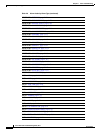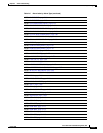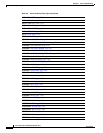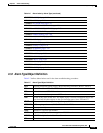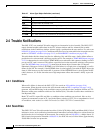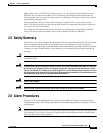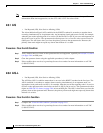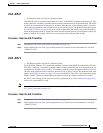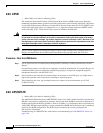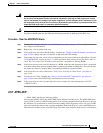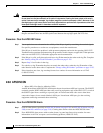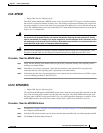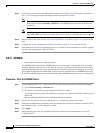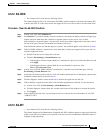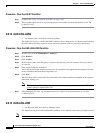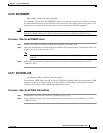
2-18
Cisco ONS 15327 Troubleshooting Guide, R3.4
March 2004
Chapter 2 Alarm Troubleshooting
Alarm Procedures
2.6.5 APSB
• Minor (MN), Non-Service Affecting (NSA)
The Automatic Protection Switching (APS) Channel Byte Failure (APSB) alarm occurs when line
terminating equipment detects protection switching byte failure in the incoming APS signal. The failure
occurs when an inconsistent APS byte or invalid code is detected. Some older, non-Cisco, SONET nodes
send invalid APS codes if they are configured in a 1+1 protection scheme with newer SONET nodes,
such as the ONS 15327. These invalid codes causes an APSB on an ONS node.
Warning
Invisible laser radiation might be emitted from the end of the unterminated fiber cable or connector.
Do not stare into the beam directly with optical instruments. Viewing the laser output with certain
optical instruments (for example, eye loupes, magnifiers, and microscopes) within a distance of 100
mm might pose an eye hazard. Use of controls or adjustments or performance of procedures other than
those specified might result in hazardous radiation exposure.
Caution Always use the supplied electrostatic discharge wristband when working with a powered ONS 15327.
Plug the wristband cable into the ESD jack located between the top high-speed and XTC slots.
Procedure: Clear the APSB Alarm
Step 1 Use an optical test set to examine the incoming SONET overhead to confirm inconsistent or invalid
Kbytes.
For specific procedures to use the test set equipment, consult the manufacturer. If corrupted K bytes are
confirmed and the upstream equipment is functioning properly, the upstream equipment might not
interoperate effectively with the ONS 15327.
Step 2 If the alarm does not clear and the overhead shows inconsistent or invalid K bytes, you might need to
replace the upstream cards for protection switching to operate properly.
Step 3 If the alarm does not clear, log onto http://www.cisco.com/tac for more information or call TAC
(1-800-553-2447).
2.6.6 APSCDFLTK
• Minor (MN), Non-Service Affecting (NSA)
The APS Default K Byte Received (APSCDFLTK) alarm occurs when a bidirectional line switched ring
(BLSR) is not properly configured, for example, when a four-node BLSR has one node configured as a
unidirectional path switched ring (UPSR). A node in a UPSR or 1+1 configuration does not send the two
valid K1/K2 APS bytes anticipated by a system configured for BLSR. One of the bytes sent is considered
invalid by the BLSR configuration. The K1/K2 byte is monitored by receiving equipment for
link-recovery information.
Troubleshooting for APSCDFLTK is often similar to troubleshooting for a BLSROSYNC alarm (see
page 2-30).



